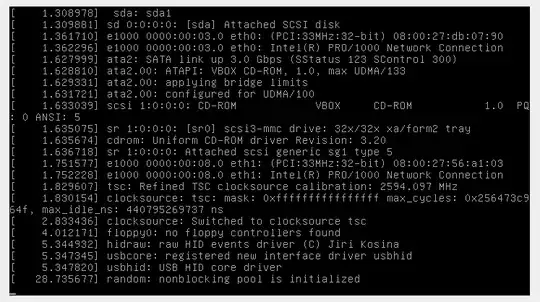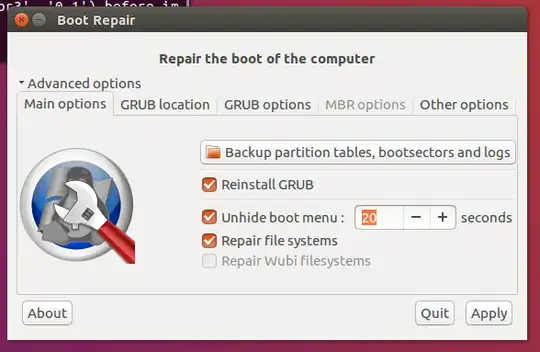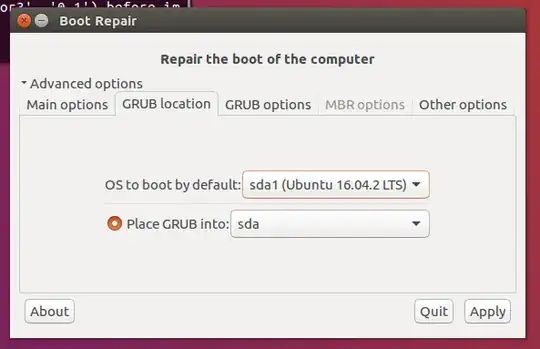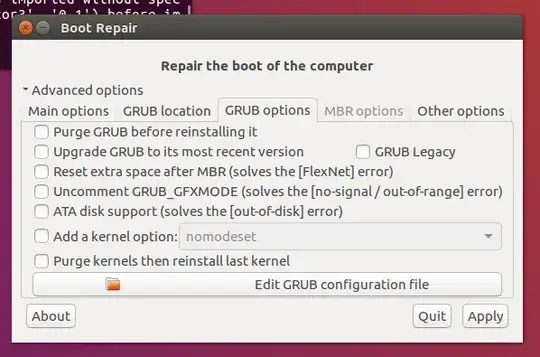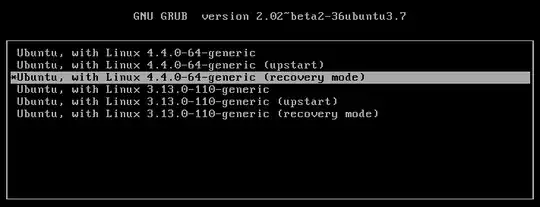I'm attempting a manual upgrade of a Vagrant VM box (of the WordPress dev environment VVV, which uses ubuntu/trusty64) from 14.04 (14.04.5 LTS I think...) to 16.04.2 LTS. This is the second time I've attempted this, I took a snapshot beforehand.
I used do-release-upgrade rather than the Debian method, and I didn't see any obvious errors/problems during it. On completion it reboots and hangs, until it gets as far as this:
[...]
usbcore: registered new interface driver usbhid
usbhid: USB HID core driver
random: nonblocking pool is initialized
The VM apparently doesn't have grub, so I downloaded an Ubuntu Live CD ISO image, configured VirtualBox to boot from that, and ran boot-repair. (pastebin output of first attempt)
Latest options I've tried:
I was then able to access Grub and boot into recovery mode. (Incidentally grub is giving me two sets of options, version 4.4 and an earlier v3.13, I'm using the most recent).
I tried updating grub and doing dpkg --configure -a, though I suspect there was nothing wrong with either and these made no difference, it still hangs in the same place.
What do I do now / what to look for?
Also, if I were to restore the 14.04 snapshot and upgrade again, is there anything I could do beforehand that would likely prevent this?
Software versions:
Vagrant 1.9.2
VirtualBox 5.1.10
Mac OS X 10.11.6 (El Capitan)
VirtualBox settings:
Linux Ubuntu (64-bit)
2 MB RAM, Chipset ICH9
Enable I/O APIC - on
Enable EFI - off
Hardware clock in UTC time - on
4 CPUs
Enable PAE/NX - off
Acceleration:
Paravirtualisation interface: legacy
Enable nested paging - on
Storage:
SATA controller type AHCI
2 ports (1 for HDD, 1 for optical)
